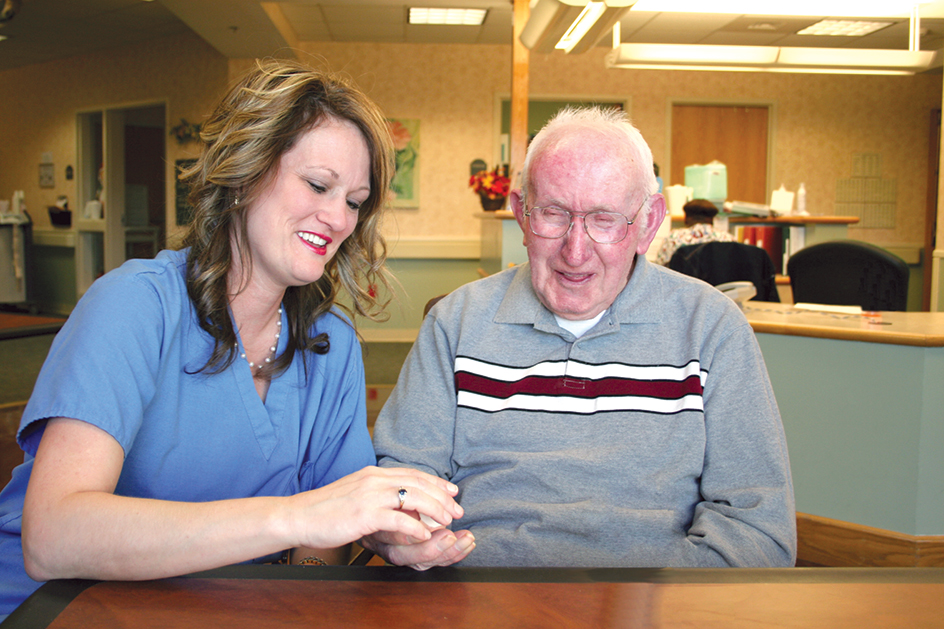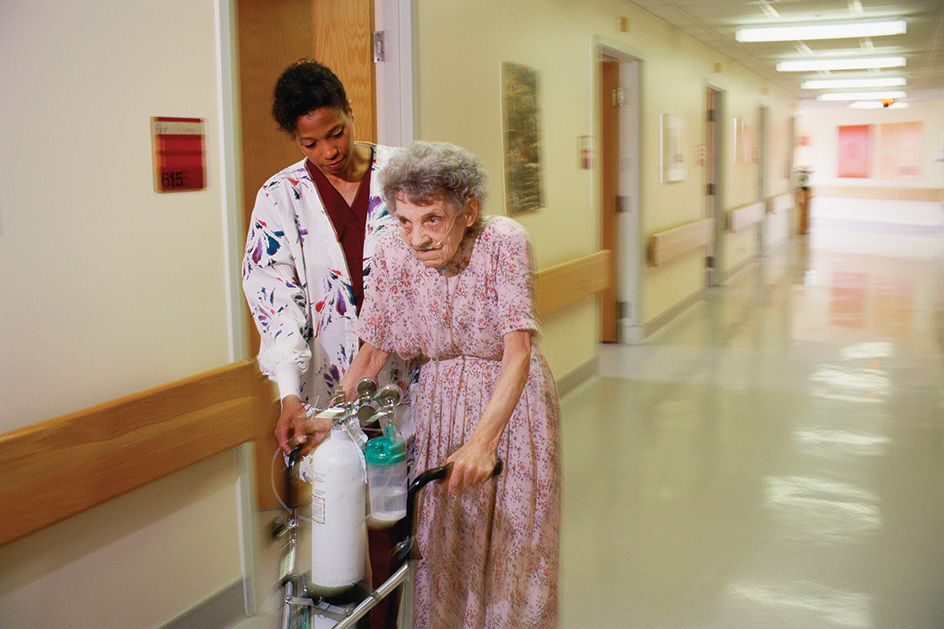Nursing home is a residential institution that provides medical or nonmedical care, chiefly for people who are 65 years old or older. Nearly all homes also accept younger patients. In the United Kingdom, some private maternity hospitals are called nursing homes. The best nursing homes strive to provide a comfortable, homelike environment for their residents.

Most nursing homes are privately owned. Others are operated by federal, state, provincial, or local governments. Some private nursing homes are run by corporations, which try to earn a profit for the owners. Others are sponsored by religious or civic groups, which do not have a primary goal of making money.
Most countries have laws governing the operation of nursing homes and require the institutions to have a license. Inspectors visit the homes periodically to make sure they follow these laws.
Types of nursing homes
There are three types of nursing homes: (1) skilled nursing care homes, (2) intermediate care facilities, and (3) supervised assisted living facilities. They differ according to the types of patients they care for and the kinds of services they offer.
Skilled nursing care homes
provide more extensive services than the other types of nursing homes. For example, they offer diagnostic, laboratory, and medication services; therapy programs; and dental care. Registered nurses supervise the care of patients according to the instructions of the institution’s medical director. Physicians visit these homes frequently. Most skilled nursing care homes are run by licensed administrators.

Most of the patients in skilled nursing care homes require medical attention around the clock. Some have serious illnesses or disabilities. Others stay in these institutions after being hospitalized. They receive additional treatment before returning home.
Most skilled nursing care homes have transfer agreements with hospitals, intermediate care facilities, and other health-care institutions. Patients who become so ill that they need more medical care than a nursing home can provide are taken to a hospital. Those whose health improves, but who still require some nursing care, are transferred to an intermediate care facility or other health-care institution. Skilled nursing care homes are run by a state-licensed administrator. These institutions are certified for participation in federal health care programs.
Intermediate care facilities,
also called basic nursing care homes, provide basic nursing services. Registered nurses examine the residents periodically to determine what treatment is needed. Most patients in intermediate care facilities suffer from a long-term illness, such as Alzheimer’s disease or Parkinson’s disease. However, they require only minor medical care. Doctors visit these nursing homes regularly.
Registered nurses direct the nursing programs in intermediate care facilities, but an administrator runs these institutions. Most intermediate care facilities are certified for participation in Medicaid.
Supervised assisted living facilities
provide nonmedical services. These services include preparing and serving the residents’ meals and helping the men and women care for themselves. For example, members of the staff assist residents who have difficulty dressing themselves. The institutions also plan outings and other social activities for the residents.

Most residents of assisted living facilities need only routine medical examinations, and physicians visit these homes only when necessary. A supervisor of residential care directs the services provided.
Selecting a nursing home
Quality of care.
In selecting a nursing home, it is important to match both the medical and psychological needs of a person with the resources of the institution.
For example, not all older adults require the same amount of medical care. A study of nursing homes revealed that a number of relatively healthy people lived in institutions that had extensive medical facilities. The study also found that many people who needed medical treatment lived in nursing homes that did not have adequate medical services.
Nursing homes also should provide for the psychological needs of their residents. Most people in nursing homes can still lead productive lives. However, some low-quality institutions have few or no activities for residents. The best nursing homes encourage residents to stay active and to participate in a variety of community service and social activities.
Emotional effects.
Many families feel guilty about placing an elderly relative in a nursing home. In most cases, they agree to this action only as a last resort. They do so when the person’s health problems grow too severe and the family’s social and financial resources become too strained to keep the relative at home.
Many elderly people suffer stress when they must adjust to the unfamiliar environment of a nursing home. Some older people regard it as the final step before death. The strain of the move can result in depression, increased health problems, and, in certain cases, even death.
There are several ways to lessen the strain on older people, including involving them in the decision to move to a nursing home and in the choice of a facility. The institution should allow patients to keep personal belongings in their new room. It is also important to choose a home where the staff is well trained and concerned about the patients.
